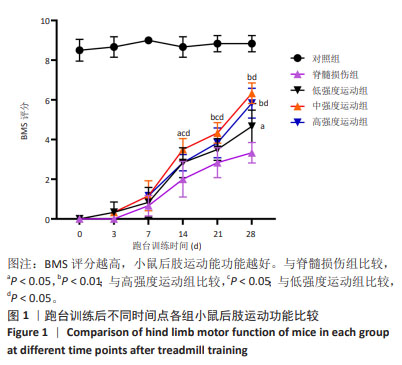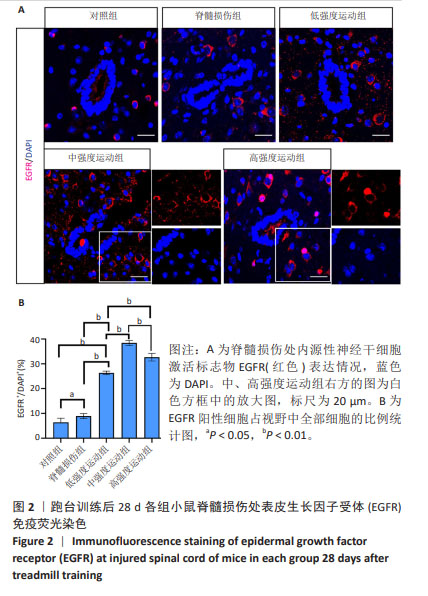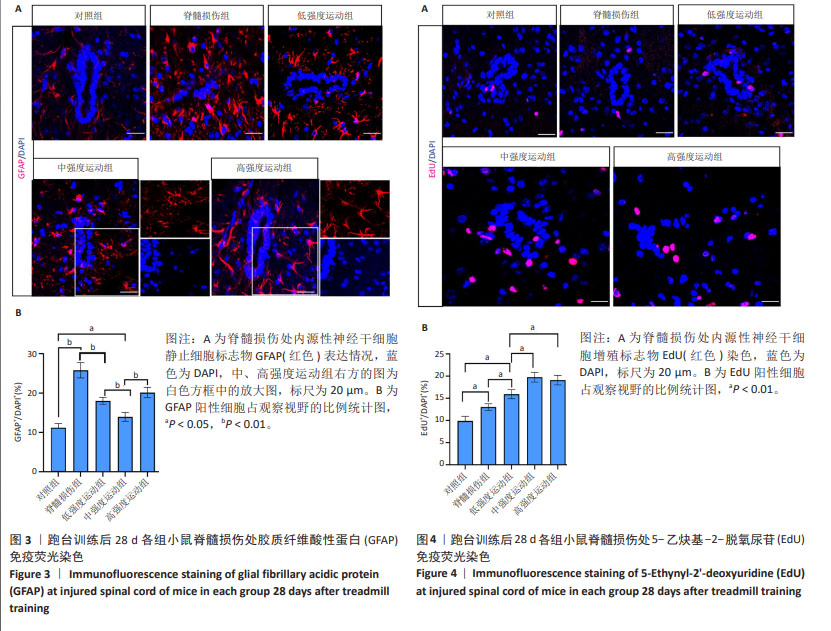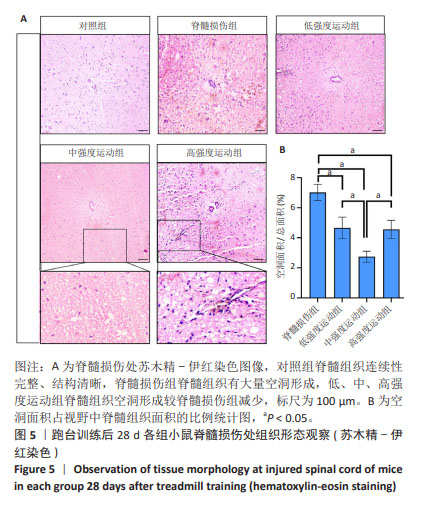[1] HACHEM LD, AHUJA CS, FEHLINGS MG. Assessment and management of acute spinal cord injury: From point of injury to rehabilitation. J Spinal Cord Med. 2017;40(6):665-675.
[2] ANJUM A, YAZID MD, FAUZI DAUD M, et al. Spinal cord injury: pathophysiology, multimolecular interactions, and underlying recovery mechanisms. Int J Mol Sci. 2020;21(20):7533.
[3] FLACK JA, SHARMA KD, XIE JY. Delving into the recent advancements of spinal cord injury treatment: a review of recent progress. Neural Regen Res. 2022;17(2):283-291.
[4] BADHIWALA JH, WILSON JR, WITIW CD, et al. The influence of timing of surgical decompression for acute spinal cord injury: a pooled analysis of individual patient data. Lancet Neurol. 2021;20(2):117-126.
[5] REYNOLDS BA, WEISS S. Generation of neurons and astrocytes from isolated cells of the adult mammalian central nervous system. Science. 1992;255(5052):1707-1710.
[6] CUSIMANO M, BRAMBILLA E, CAPOTONDO A, et al. Selective killing of spinal cord neural stem cells impairs locomotor recovery in a mouse model of spinal cord injury. J Neuroinflamm. 2018;15(1):1-14.
[7] MAO Y, MATHEWS K, GORRIE CA. Temporal response of endogenous neural progenitor cells following injury to the adult rat spinal cord. Front Cell Neurosci. 2016;10:58.
[8] URBÁN N, VAN DEN BERG DL, FORGET A, et al. Return to quiescence of mouse neural stem cells by degradation of a proactivation protein. Science. 2016;353(6296):292-295.
[9] BASAK O, KRIEGER TG, MURARO MJ, et al. Troy+ brain stem cells cycle through quiescence and regulate their number by sensing niche occupancy. Proc Natl Acad Sci USA. 2018;115(4):E610-E619.
[10] MOON HY, YOON KJ, LEE WS, et al. Neural maturation enhanced by exercise-induced extracellular derivatives. Sci Rep. 2020;10(1):3893.
[11] HONG M, KIM M, KIM TW, et al. Treadmill exercise improves motor function and short-term memory by enhancing synaptic plasticity and neurogenesis in photothrombotic stroke mice. Int Neurourol J. 2020;24(Suppl 1):S28-38.
[12] LIU Z, MA Y, PAN S, et al. Effects of involuntary treadmill running in combination with swimming on adult neurogenesis in an Alzheimer’s mouse model. Neurochem Int. 2022;155:105309.
[13] NIWA A, NISHIBORI M, HAMASAKI S, et al. Voluntary exercise induces neurogenesis in the hypothalamus and ependymal lining of the third ventricle. Brain Struct Funct. 2016;221:1653-1666.
[14] FORET A, QUERTAINMONT R, BOTMAN O, et al. Stem cells in the adult rat spinal cord: plasticity after injury and treadmill training exercise. J Neurochem. 2010;112(3):762-772.
[15] CIZKOVA D, NAGYOVA M, SLOVINSKA L, et al. Response of ependymal progenitors to spinal cord injury or enhanced physical activity in adult rat. Cell Mol Neurobiol. 2009;29:999-1013.
[16] LOTTER JK, HENDERSON CE, PLAWECKI A, et al. Task-specific versus impairment-based training on locomotor performance in individuals with chronic spinal cord injury: a randomized crossover study. Neurorehabil Neural Repair. 2020;34(7):627-639.
[17] HORNBY TG, MOORE JL, LOVELL L, et al. Influence of skill and exercise training parameters on locomotor recovery during stroke rehabilitation. Curr Opin Neurol. 2016;29(6):677.
[18] BRAZG G, FAHEY M, HOLLERAN CL, et al. Effects of training intensity on locomotor performance in individuals with chronic spinal cord injury: a randomized crossover study. Neurorehabil Neural Repair. 2017; 31(10-11):944-954.
[19] CHERIYAN T, RYAN DJ, WEINREB JH, et al. Spinal cord injury models: a review. Spinal Cord. 2014;52(8):588-595.
[20] ZHAN Z, PAN L, ZHU Y, et al. Moderate-Intensity Treadmill Exercise Promotes mTOR-Dependent Motor Cortical Neurotrophic Factor Expression and Functional Recovery in a Murine Model of Crush Spinal Cord Injury (SCI). Mol Neurobiol. 2023;60(2):960-978.
[21] ENGESSER-CESAR C, ANDERSON AJ, BASSO DM, et al. Voluntary wheel running improves recovery from a moderate spinal cord injury. J Neurotrauma. 2005;22(1):157-171.
[22] CODEGA P, SILVA-VARGAS V, PAUL A, et al. Prospective identification and purification of quiescent adult neural stem cells from their in vivo niche. Neuron. 2014;82(3):545-559.
[23] 张毅,张强,曹亮,等.内源性神经干细胞在脊髓损伤修复中的研究进展[J].解放军医药杂志,2022,34(9):111-116.
[24] KARELINA K, SCHNEIDERMAN K, SHAH S, et al. Moderate intensity treadmill exercise increases survival of newborn hippocampal neurons and improves neurobehavioral outcomes after traumatic brain injury. J Neurotraum. 2021;38(13):1858-1869.
[25] NOVAES GOMES FG, FERNANDES J, VANNUCCI CAMPOS D, et al. The beneficial effects of strength exercise on hippocampal cell proliferation and apoptotic signaling is impaired by anabolic androgenic steroids. Psychoneuroendocrinology. 2014;50:106-117.
[26] NOKIA MS, LENSU S, AHTIAINEN JP, et al. Physical exercise increases adult hippocampal neurogenesis in male rats provided it is aerobic and sustained. J Physiol. 2016;594(7):1855-1873.
[27] RAHMATI M, KAZEMI A. Various exercise intensities differentially regulate GAP-43 and CAP-1 expression in the rat hippocampus. Gene. 2019;692:185-194.
[28] SOYA H, NAKAMURA T, DEOCARIS CC, et al. BDNF induction with mild exercise in the rat hippocampus. Biochem Biophys Res Commun. 2007;358(4):961-967.
[29] OKAMOTO M, HOJO Y, INOUE K, et al. Mild exercise increases dihydrotestosterone in hippocampus providing evidence for androgenic mediation of neurogenesis. Proc Natl Acad Sci USA. 2012;109(32): 13100-13105.
[30] SUWABE K, BYUN K, HYODO K, et al. Rapid stimulation of human dentate gyrus function with acute mild exercise. Proc Natl Acad Sci USA. 2018;115(41):10487-10492.
[31] INOUE K, HANAOKA Y, NISHIJIMA T, et al. Long-term mild exercise training enhances hippocampus-dependent memory in rats. Int J Sports Med. 2014;36(4):280-285.
[32] WESTON ME, KOEP JL, LESTER AB, et al. The acute effect of exercise intensity on peripheral and cerebral vascular function in healthy adults. J Appl Physiol. 2022;133(2):461-470.
[33] JAMNICK NA, PETTITT RW, GRANATA C, et al. An examination and critique of current methods to determine exercise intensity. Sports Med. 2020;50(10):1729-1756.
[34] SHAH PK, GARCIA-ALIAS G, CHOE J, et al. Use of quadrupedal step training to re-engage spinal interneuronal networks and improve locomotor function after spinal cord injury. Brain. 2013;136(11): 3362-3377.
[35] SHIBATA T, TASHIRO S, SHINOZAKI M, et al. Treadmill training based on the overload principle promotes locomotor recovery in a mouse model of chronic spinal cord injury. Exp Neurol. 2021;345:113834.
[36] CHA J, HENG C, REINKENSMEYER DJ, et al. Locomotor ability in spinal rats is dependent on the amount of activity imposed on the hindlimbs during treadmill training. J Neurotraum. 2007;24(6): 1000-1012.
[37] KEIKHAEI R, ABDI E, DARVISHI M, et al. Combined treatment of high‐intensity interval training with neural stem cell generation on contusive model of spinal cord injury in rats. Brain Behav. 2023;13(7):e3043.
[38] KREHER JB, SCHWARTZ JB. Overtraining syndrome: a practical guide. Sports health. 2012;4(2):128-138.
[39] CAO L, HUANG MZ, ZHANG Q, et al. The neural stem cell properties of Pkd2l1+ cerebrospinal fluid-contacting neurons in vivo. Front Cell Neurosci. 2022;16:992520.
[40] WANG S, HE Y, ZHANG H, et al. The neural stem cell properties of PKD2L1+ cerebrospinal fluid-contacting neurons in vitro. Front Cell Neurosci. 2021;15:630882. |



